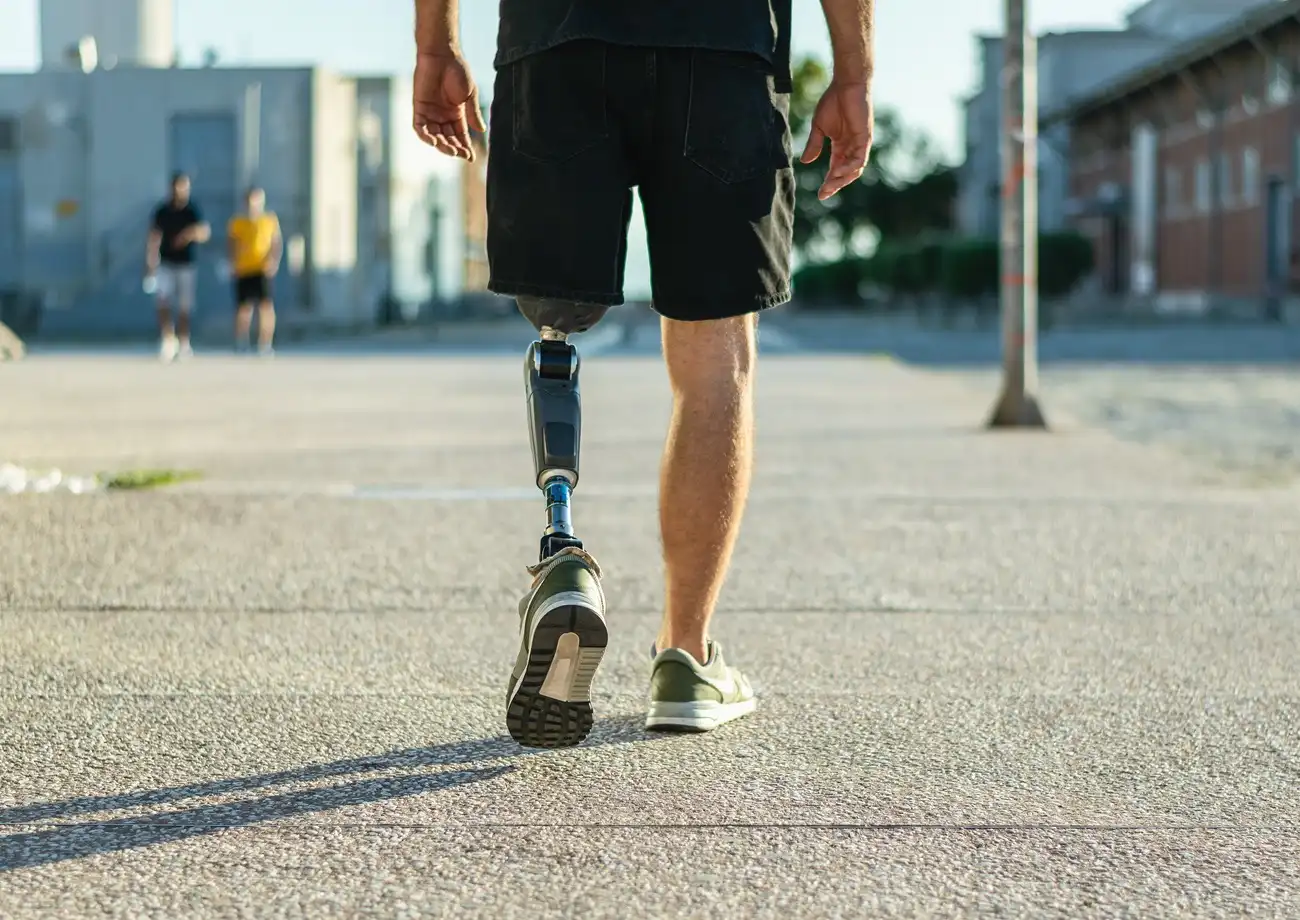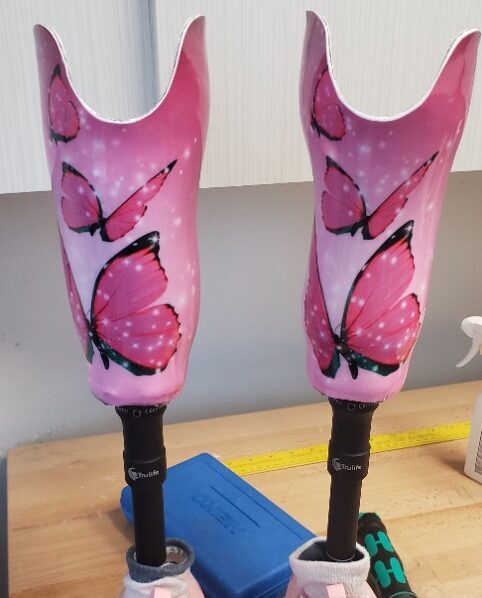Your prosthetic device is an extension of yourself, enabling you to navigate the world with greater independence. Just like any valuable tool, proper daily care and maintenance are essential to ensure its longevity, functionality, and your continued comfort. At Nevada Limb & Brace, we believe in empowering our clients with the knowledge they need to take excellent care of their prostheses. This post offers practical tips for incorporating prosthetic care into your daily routine.
Caring for Your Residual Limb:
The foundation of a comfortable and functional prosthetic experience starts with the health of your residual limb.
-
Hygiene is Key: Wash your residual limb thoroughly with mild soap and water at least once a day, preferably before putting on your prosthesis. Pay close attention to skin folds and creases. Rinse thoroughly and pat dry completely before donning your device.
-
Skin Inspection: Make it a daily habit to carefully inspect your residual limb for any signs of redness, irritation, blisters, or breakdown. Addressing these issues early can prevent more serious complications. If you notice anything unusual, consult your prosthetist or healthcare provider promptly.
-
Moisturize Wisely: Depending on your skin type and your prosthetist’s recommendations, you may need to moisturize your residual limb. Use a mild, fragrance-free lotion or cream, and allow it to fully absorb before putting on your socket. Avoid applying excessive amounts, as this can interfere with socket fit.
-
Sock Management: If you use prosthetic socks, ensure they are clean and dry each day. Change them as needed throughout the day, especially if you experience sweating. Follow your prosthetist’s guidance on the appropriate thickness and number of socks to maintain a proper socket fit.
Maintaining Your Prosthetic Device:
Regular cleaning and careful handling of your prosthetic device will help prolong its lifespan and ensure optimal performance.
-
Daily Cleaning: Wipe down the exterior of your prosthetic socket and any exposed components with a damp, lint-free cloth after each use. This helps remove dirt, sweat, and debris. For more stubborn marks, use a mild soap solution, ensuring you wipe it off with a clean, damp cloth and allow the components to dry thoroughly.
-
Socket Care: Pay attention to the inside of your socket. If it’s removable, clean it according to your prosthetist’s instructions. Ensure it is completely dry before reinserting your residual limb. If the liner is separate, clean it as directed, typically with mild soap and water, and allow it to air dry.
-
Component Inspection: Regularly examine all visible parts of your prosthesis for any signs of wear and tear, such as loose screws, cracks, or unusual noises. If you notice anything concerning, contact your prosthetist for assessment and potential repair. Do not attempt to fix any mechanical issues yourself, as this could cause further damage or compromise the safety of your device.
-
Battery Care (for electronic components): If your prosthesis has electronic components, follow the manufacturer’s instructions for battery care, charging, and storage. Ensure connections are clean and secure.
-
Avoid Extreme Conditions: Protect your prosthesis from extreme temperatures, excessive moisture, and harsh chemicals, as these can damage the materials and components. Be mindful during activities that could expose your device to these elements.
General Tips for Longevity:
Beyond daily cleaning, adopting these habits will contribute to the long-term health of your prosthesis:
-
Proper Donning and Doffing: Follow the donning and doffing techniques taught by your prosthetist. Avoid forcing your residual limb into the socket or yanking on components, as this can cause damage.
-
Safe Storage: When you’re not wearing your prosthesis, store it in a safe place where it won’t be accidentally knocked over or damaged. Consider using a prosthetic stand or case.
-
Listen to Your Body: Pay attention to any discomfort, pain, or changes in the fit of your prosthesis. These could be signs of a problem that needs to be addressed by your prosthetist.
-
Regular Check-ups: Schedule and attend regular check-up appointments with your prosthetist. These appointments allow for adjustments, assessments of wear and tear, and ensure your prosthesis continues to meet your needs.
By incorporating these simple yet crucial steps into your daily routine, you can significantly extend the life of your prosthetic device, maintain optimal comfort and function, and continue to live an active and fulfilling life. Remember, your prosthetist at Nevada Limb & Brace is always available to answer your questions and provide further guidance on the care and maintenance of your specific device.




